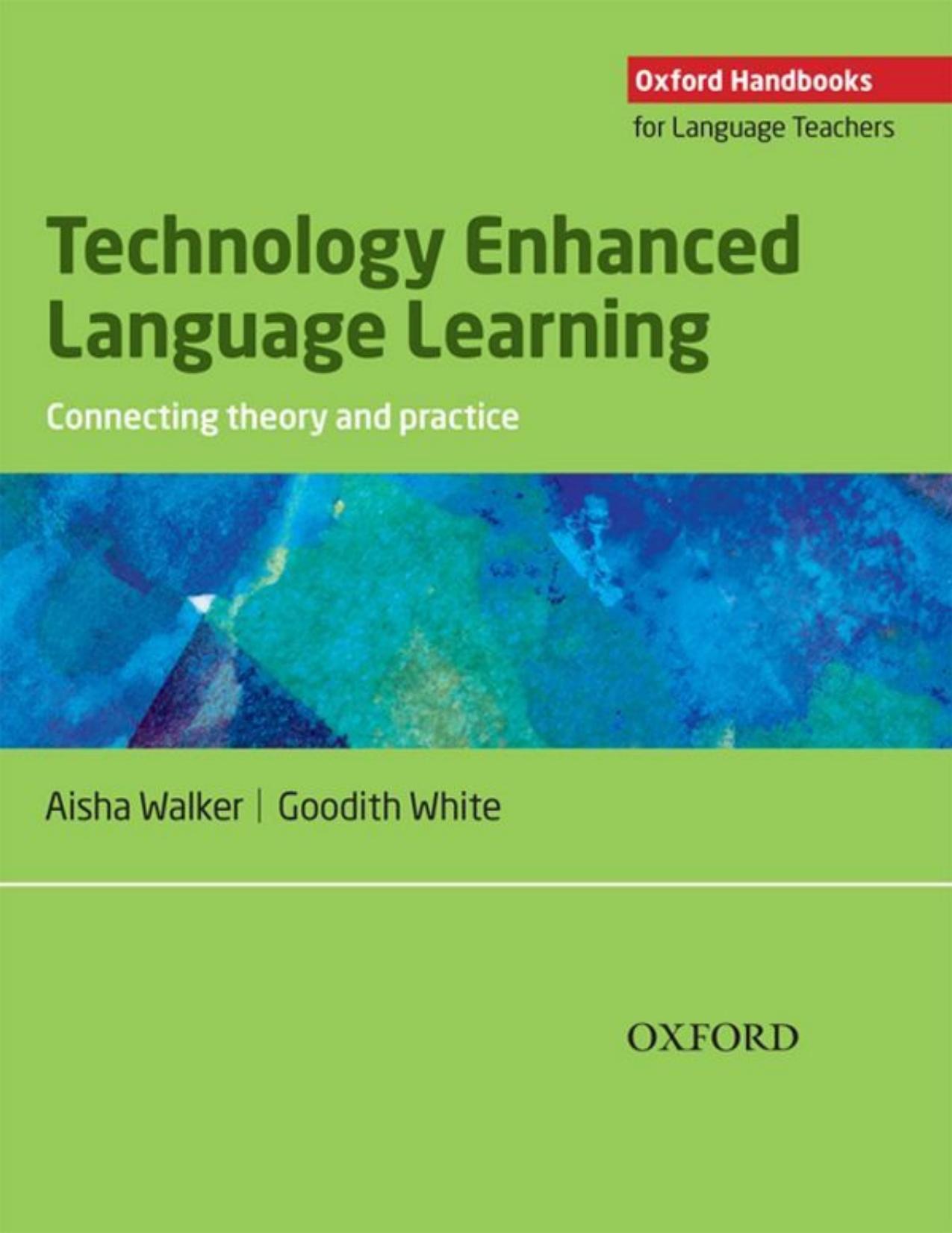Technology Enhanced Language Learning connecting theory and practice 1st Edition by Aisha Walker, Goodith White ISBN 019437601X 9780194376013
$70.00 Original price was: $70.00.$35.00Current price is: $35.00.
Instant download Technology Enhanced Language Learning connecting theory and pHandbooks for Language Teachers Walker Aisha & Goodith White after payment
Technology Enhanced Language Learning connecting theory and practice 1st Edition by Aisha Walker, Goodith White – Ebook PDF Instant Download/Delivery: 019437601X, 9780194376013
Full dowload Technology Enhanced Language Learning connecting theory and practice 1st Edition after payment
Product details:
Technology Enhanced Language Learning connecting theory and practice 1st Table of contents:
1 Learning
Introduction
Computer assisted language learning
Tutor, tutee, tool …?
Communicative and digital competence
From CALL to TELL
Summary
Further reading
2 Communication
Introduction
Communication and context
Emotion
Digital contexts and communication
The voice of authority (Web 1.0)
Multiple voices (Web 2.0)
Language choice and language change in digital communication
‘Digital natives’ and ‘digital immigrants’
The role of hardware
Summary
Further reading
3 Listening and speaking skills
Introduction
Spoken language on the internet
Second language (L2) listening skills
Listening strategies
Using technology to teach listening skills
TASK 1: Designing your own video listening tasks
TASK 2: Lean on me – Using lyrics and music
TASK 3: Making listening materials using Audacity
Speaking skills
TASK 4: ChatBots
TASK 5: Speech to text
TASK 6: A Voki webpage for learning to speak Spanish
TASK 7: Speaking and listening practice in a virtual space
Summary
Further reading
4 Reading skills
Introduction
Reading in a first language (L1) and second language (L2)
How is reading in a second language different?
Skills and strategies in second language (L2) reading
How technology has changed the ways in which we read
TASK 1: New reading communities
Reading, motivation, and ‘community’
Using technology to learn and teach reading skills
TASK 2: Scrible
Using digital texts for second language (L2) reading
TASK 3: Inanimate Alice – Using digital fiction
TASK 4: Interactive fiction
Connections between second language (L2) reading and writing
TASK 5: Using graphic organizers
Summary
Further reading
5 Writing skills
Introduction
What skills do second language (L2) writers need to learn?
TASK 1: How second language (L2) writers feel
Current approaches to the teaching of writing
Product approaches
TASK 2: OWLs
Process approaches
TASK 3: Maps and plans
TASK 4: Writing tutorial
Social practice approach
TASK 5: News tweetment
New challenges for teaching second language (L2) writing
TASK 6: Why I sent Oxford a rejection letter
How technology is changing the way we write
Wikis
TASK 7: Public wikis or Wikipedia
Blogs
TASK 8: Blog for a week
Summary
Further reading
6 Multimodal literacies: learning through visuals
Introduction
The role of visuals in language learning
TASK 1: Words and pictures
Computer technology as a resource for visuals
TASK 2: Video dictionary
What role do visuals play in the ‘new’ literacies?
TASK 3: Reading a webpage
Multimodality and learning
The teacher’s role in supporting the new ‘literacies’
Classroom activities
TASK 4: Finding and being critical about online video
TASK 5: Finding and evaluating images
TASK 6: Making a digital guidebook
TASK 7: Comic-strip story (static images)
TASK 8: Animated dialogue (moving images)
TASK 9: House-racing video
Summary
Further reading
7 Study skills and EAP
Introduction
How has technology changed the way we study?
What do learners need to know?
Virtual Learning Environments (VLEs)
Reading
TASK 1: Ingenta Connect
TASK 2: Mark Warschauer and Papyrus News
TASK 3: Saltwiki
From reading to writing
TASK 4: CiteULike
Writing
Listening
TASK 5: Slideshare
Speaking and group work
TASK 6: Virtual classroom
Productivity
TASK 7: Notes and productivity
Summary
Further reading
8 Young learners
Introduction
Defining young learners
Children and technology
Tactile interfaces
TASK 1: Handwriting games
Children learning language
Engaging young learners
TASK 2: Manchester United
TASK 3: Club Penguin
Immersion
TASK 4: Scratch programming
Stories
TASK 5: The Enormous Turnip
TASK 6: Storybook making
Safety and protecting children
TASK 7: Edmodo
Summary
Further reading
9 Assessment
Introduction
The different purposes of assessment
How does technology affect assessment?
Argument one: technology is part of real life
TASK 1: Assessing digital literacy
Argument two: technology can make assessment more efficient
Argument three: technology creates new possibilities
TASK 2: Adaptive testing
Types of assessment
TASK 3: Traditional or electronic?
Reliability and validity
Washback
TASK 4: Washback and technology
Technology in the process of assessment
TASK 5: Authoring
TASK 6: Foliospaces
TASK 7: Questions and answers
TASK 8: Audio feedback
Drawbacks of technology for assessment
Summary
Further reading
10 Teachers using technology
Introduction
What skills do language teachers need in order to use technology for language teaching?
TASK 1: Forming a learning community
Teacher resistance
VLEs and IWBs
TASK 2: Technologically-damaged learning?
Teachers’ roles
Educating teachers to use technology
TASK 3: Polling and voting software
Continuing professional development
TASK 4: E-portfolios for professional development
Summary
Further reading
11 Choosing and using materials
Introduction
How can TELL materials support language learning?
Providing the conditions for language learning to take place
Providing for different kinds of language learner
TASK 1: Adapting a coursebook
What does TELL mean for the future of coursebooks?
Evaluating language learning software
TASK 2: Software reviews
TASK 3: Digital tools and thinking skills
Evaluating language
TASK 4: Learner language in a chat room
Encouraging autonomous learning
TASK 5: Using computer games
Summary
Further reading
12 Summary and future gazing
Introduction
Technology in society
Looking to the future



